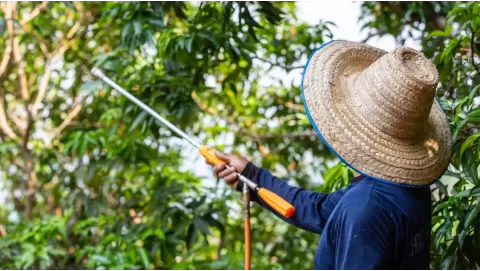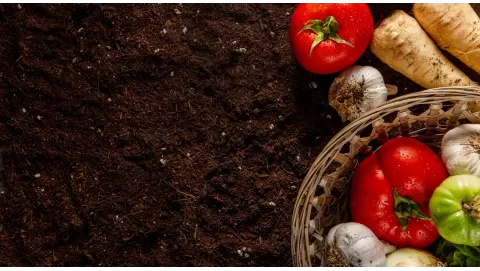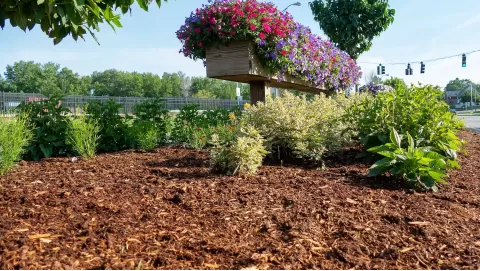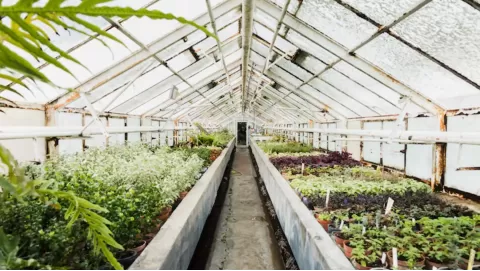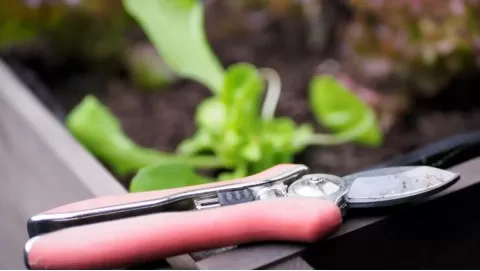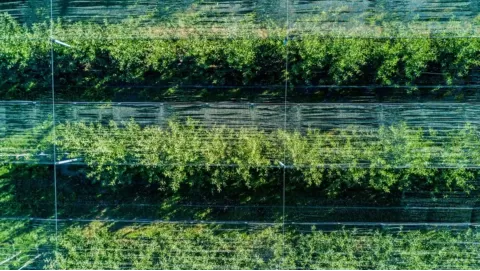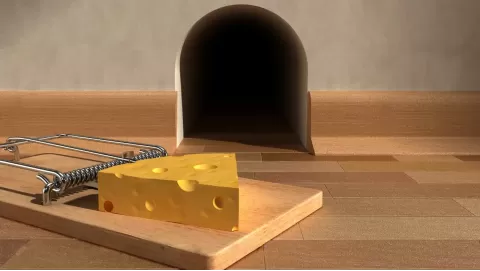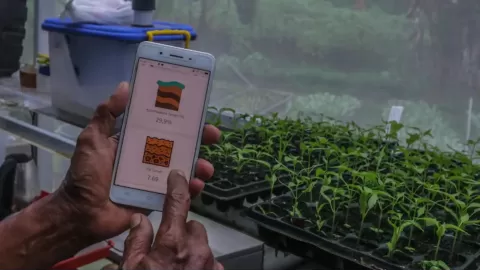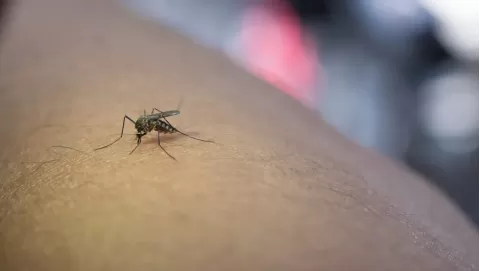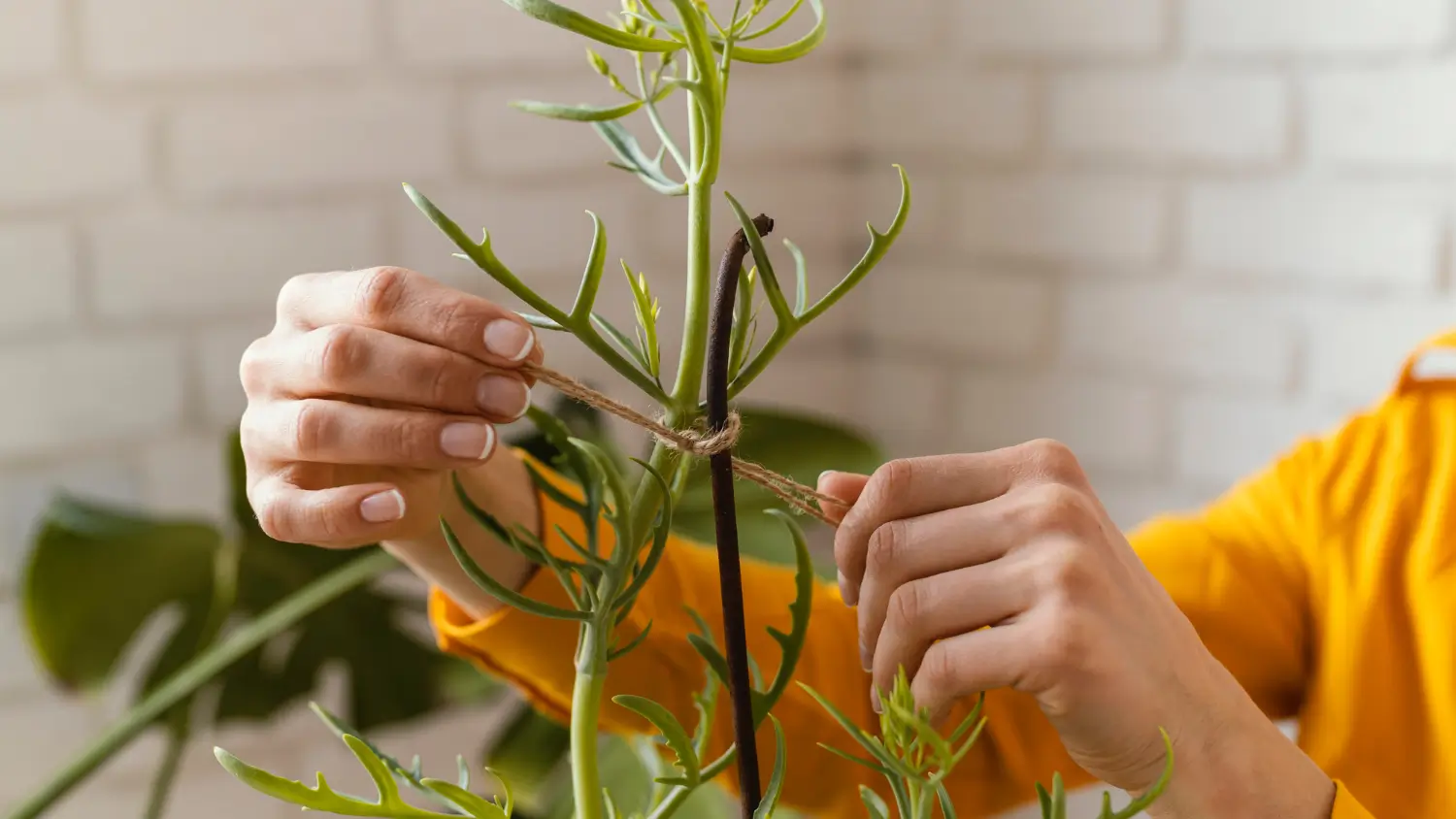
Best plant supports for climbing and heavy plants: Keep your garden upright
Some plants are tall or bear heavy fruits. If not supported, these plants may fall over, bend or snap. This often occurs with tomatoes, peas, beans and tall flowers, such as sunflowers or delphiniums. As plants tumble, their leaves and fruits come into contact with the ground and rot, harbor pests or incubate disease. It also makes the garden unsightly and cuts down the amount of fruit produced by the plant.
Garden plant supports can help solve this issue. Cages, stakes, trellises and other reinforcements help the plants stand. They provide the plants with support, increase air flow and make it easier to harvest fruits or flowers. Heavy duty plant supports, help save space, this is also important in small gardens.
A growing plant is a healthier, cleaner, more productive plant. That is why it’s smart for any gardener to use the right support system.
Why Plant Support Matters
There's more to plant support than holding the plants upright. It promotes plant health, saves space and makes gardening easy. Here's how:
Health and Yield
Tall plants, or those laden with heavy fruit, frequently have difficulty supporting themselves. Without assistance, their stalks may be bowed or broken by the weight of the rosettes. Fruits or leaves that touch the ground are more prone to rot, especially after rain or watering. Wet soil can also attract slugs, snails and other pests, which can harm the plant.
Support structures such as cages, stakes, and trellises allow the plant to grow up off the ground, keeping the fruits clean, dry, and out of the reach of pests. They also improve air circulation through the leaves and stems, which can lessen fungal problems, including powdery mildew, leaf spots and blight. In brief, sturdy plant support means healthier plants and more flowers or fruits throughout the season.
Space Efficiency
Space is not always abundant in gardens. Space can be at a premium in small gardens, pots or raised beds. Heavy duty plant supports are an excellent method to get more plants in a smaller space. Trellises, cages and stakes encourage plants to grow up, not out. This upright method of growing allows gardeners to fit more vegetables, herbs or flowers into the same space.
Vining plants like peas and beans take advantage of vertical space. Providing them something to climb on helps them grow better and they also won’t take over the ground. Even in spacious gardens and especially in ones that are tiny, vertical growing is a good way to keep things neat and well-organized.
Ease of Harvest
If plants are staked, the fruit is encouraged to grow up off the ground, where it is more visible. This speeds up and cleans up harvesting. Gardeners don’t have to bend, kneel or reach through thick leaves to pick the ripe fruit. Rather, the fruits and vegetables are all clearly visible and accessible.
It’s particularly useful for those who suffer from back pain or joint problems. And it actually makes picking tomatoes, or cucumbers, or beans, or flowers more fun. It also prevents from accidentally trampling plants as gardener reach for hidden fruit.
Types of Plant Support Systems
Different plants need different kinds of support. Some need strong cages, while others grow well on stakes or trellises. Below are the main types of plant support systems gardeners can use.
1. Cages
Cages are wire frameworks that encircle the plant and hold it up. They are in the shape of cones, squares, or triangles.
- Cages are straightforward to plant in place and require minimal work once they’re there. They prevent the plant’s branches from breaking and the fruit from getting too much sun and spoiling. They work particularly well with bushy plants.
- Some cages are larger and can be unwieldy to store when not in use. Heavy-duty wire cages are also more costly.
- Cages are most effective with indeterminate tomatoes, peppers and container plants.
2. Stakes and Florida Weave
Stakes are straight rods inserted into the soil close to a plant. The growing plant is fastened to the stake. The stake method is very straightforward and is best for determinate tomatoes that do not get too tall.
In the Florida weave, string is laced between stakes running in rows. This is a great way to support multiple plants. Stakes and the Florida weave are less expensive than cages and require less space. But they are more work like gardeners have to tie, plant, and prune the plants, often.
3. Trellises and Netting
Trellises are wooden or metal frameworks. Some are shaped like A-frames or tall obelisks. Netting systems consist of plastic or nylon nets that plants can grow and climb on. These are great for light plants with curling tendrils.
Trellises and nets are attractive in the garden and can last several seasons. They are ideal for peas, beans, clematis, sweet peas, and climbing roses.
4. Overhead Twine Systems
This is usually a commercial or large garden tactic. Twine drops from an overhead frame and the plant is encouraged to grow up it.
- Commercial fashion installations employ poles or wires that are suspended between rows.
- DIY A-frames are wooden or bamboo frames with twine stretched across the top.
- This system improves the amount of air and sunlight plants receive, which can mean bigger harvests.
- It should have very strong support at the top and should be checked often to be sure the twine remains tight.
Material Choices
The material that people use for heavy duty plant supports can vary quite a bit in terms of strength, cost, and longevity. Gardeners have a number of options depending on what they need and what they want to spend.
Metal Options
Metal is durable and sturdy. Popular options include rebar, livestock panels, and welded wire. They can support heavy plants such as tomatoes or cucumbers. Metal supports withstand wind and rain, but can be heavy and, if left uncoated, may rust.
Wood and Bamboo
Wood and bamboo are popular for DIY frames. They’re naturally looking and look good in the garden. Bamboo sticks are light, and they can be moved easily. But those materials may deteriorate with age and in damp conditions. They are an excellent option for use in a temporary or seasonal garden.
Plastic-Coated Wire
Wiring with plastic-coated wire offers the strength of metal and the protection of plastic against rust. It also gives a neater look in the garden. These are commonly used for trellises or cages. They last longer than plain wire and won’t cut into plant stems.
Budget vs Longevity
Some materials are cheaper upfront but more expensive over time to replace. Still others might be more costly when they are initially purchased, but they last for years. However, gardeners should consider how frequently they want to replace their supports and what they are prepared to spend. Mixed materials can all be good depending on the type of plant and how the garden lies.
Plant-Specific Recommendations
Plants require different kinds of assistance. Some are tall and spindly, others spread out, bearing heavy fruits. Selecting the correct support has a significant bearing on plant health and garden success.
1. Tomatoes
Tomatoes are among the most popular plants for which gardeners need support.
- Determinate Tomatoes reach a certain height and that’s it. They perform well with cages that support the plant’s shape and fruit.
- Indeterminate Tomatoes continue to grow and require more sturdy structure such as tall stakes or above head twine system. These techniques encourage the plant to grow upward and keep it neat.
- Container Tomatoes grow in pots and require a smaller cage or a tripod of stakes. These supports are squat and strong enough to support the plant and fruit.
Tomato cages are constructed of steel wire and are made in the USA. It is the best tomato plant support system that also offers support to larger vegetables and other heavy limbed plants.
A premium dark green vinyl-coated, rust-proof tomato cage will grow a bountiful harvest of tomatoes. It keeps plants healthy, contained, and off the ground to prevent disease, pests, and breakage. This plant cage for tall plants is built to last and measures 14 inches x 42 inches and has 4 rings.
Plant Support Cages are constructed of 113-galvanized wire. Cassie’s Cages, available from China, are a source for inexpensive support for small tomato and pepper plants. They also are a fabulous price point cage.
2. Peas and Beans
Peas and beans are vining plants that wrap around their support with their tendrils.
- Bamboo or wooden Teepee Stakes are also very easy to install. The poles are tied together at the top to create a tripod and provide a place for the vines to climb.
- There is also the Frames with netting. It provides a nice large area for plants while being easy to hose down when the growing season is over.
Heavy duty PVC netting for broad support. Ideal for long peas and runner beans for larger gardens.
A tough steel fence designed to support pea plants. An attractive, easy and efficient vertical element is provided.
3. Tall Flowers (e.g., Delphinium, Hollyhock)
Taller flowers can lean or fall in the wind or rain.
- Obelisks and Spiral Stakes are beautiful and practical. They also look good in the flower beds while helping to keep the stems upright.
- Ring Supports are metal circles that go around the plant through growth and hold the plant up. They work well for flowers that have several stems that grow together.
A chic metal obelisk to support climbing or tall flowers. It provides ornamentation to the flower bedding, as well as a useful barrier against dogs and other animals.
A powder-coated steel plant support in the shape of a spiral. It cradles tall flower stems such as delphiniums or hollyhocks.
Installation and Maintenance
It is essential that plant supports are installed correctly and maintained to be effective for the entire growing season. Here’s how to make the most of the plant supports.
Timing
It’s best to put supports in place at planting time. Planting them early will save from disturbing their roots later on. And installing supports early provides plants a firm base from which to grow; that means there is less chance of their bending or breaking as they get taller or heavier.
Tying Techniques
As plants emerge, they should be tied to the support. There are various methods for doing so, depending on the plant and the kind of support:
- Soft Ties: Whenever possible, secure plants to stakes or cages with soft materials, such as strips of cloth or lengths of garden ties. Soft ties won’t harm stems and can be loosened as the plant grows.
- Pantyhose Strips: Tights strips are stretchy and gentle, so they are perfect for supporting delicate stems without damage. Just chop pantyhose into strips and loosely tie them around the plant.
- Vine Clips: User can also use vine clips to tie the stems of peas and beans and other climbing plants to wire or trellises. The clips are easy to relocate and move up as the plant gets larger.
Pruning and Training
Gardeners might also have to prune and train plants so they remain healthy and grow properly. Here’s what to consider:
- For tomatoes, as well as other plants, removing suckers a small side shoots that grow in the leaf axils can help the plant direct its energy to its main shoots and fruit. This may result in larger, healthier fruits.
- For indeterminate tomatoes, gardeners often let side shoots grow. These buds will grow and become thicker shoots that bear more fruit.
DIY and Budget Builds
Building garden plant supports provides a smart means to save money, and makes the supports serve the garden. With a little ingenuity, people can design strong, effective supports out of inexpensive materials. Here are some easy DIY ideas:
DIY Cage from Hog Wire
Hog wire is a sturdy, adaptable product that can be made into a fantastic cage for tomatoes, peppers, and even squash or cucumbers. Here's how to make one:
Materials Needed
- Hog wire (about 4 feet tall)
- Wire cutters
- Pliers
- Zip ties or wire
Steps to Build
- Cut the hog wire into a 4-foot section that people could adjust for the height if they wanted to.
- Curve the wire in a circular shape and form it as a cage. Twist the ends with a pair of pliers.
- Shove the cage into the soil a foot or so from the plant. Be sure it’s deep enough to stand up.
- Use zip ties or wire to secure the plant cage for tall plants and keep it together.
- As the plant matures, tie the stems to the cage for support.
Homemade Florida Weave Setup
The Florida weave can easily accommodate rows of plants, such as tomatoes or beans. It stakes and twines to keep plants upright.
Materials Needed
- Wooden or metal stakes (one for each plant)
- Twine or string
- Hammer
Steps to Build:
- Set the stakes in a straight line, about 2-3 feet apart depending on how far apart the plants are.
- Stake in ground 12- 18 inches apart.
- Attach the twine to the first stake at the row’s end. Extend the twine to the next stake, and keep it taut.
- Weave the twine back and forth between the stakes to form horizontal support lines.
- As the plants develop, additional lines of twine are added to help support them.
Upcycling Materials
Rather than purchasing new supports, gardeners can make use of items that are familiar to them in their homes or gardens. This saves money, and also keeps waste down.
- Ladders: Old ladders can be stood in the garden to hold climbing plants. Tie the plants up to the rung as they grow.
- Pallets: Pallets can be repurposed as simple trellis support for climbing plants
- such as peas and cucumbers. Set them upright or flat, then secure the plants to the wood using ties.
- Fencing Scraps: Old or broken fencing can be used to make a plant cage for tall plants or a trellis. Cut the fencing into sections and attach it with wire to create a sturdy support.
FAQs
What is the best support for climbing plants?
Trellises, cages and netting can help support climbing plants. They provide plants with something to climb and hold them upright.
How do you keep a large plant upright?
Use sturdy supports, such as cages, stakes, or overhead twine systems to support plants. Securing the plant loosely to these supports will help keep it stable.
How do you make a plant stand upright?
Set up a cage, stake or trellis support for climbing plants. Soft ties or twine are used to tie the plant to the support to aid in its vertical growth.
The Bottom Line
Plant support is an easy way to keep tall or heavy plants upright and healthy. If plants are not supported they can topple over, and once a plant’s leaves and fruits are on the ground, there is a better chance that they will come in contact with the dirt and that leads to rot, pests and diseases. Plants can grow better, yield more fruit and look tidier in the garden, given the right support.
Support encourages good airflow, minimizes diseases and makes harvesting simple. It also fits small gardens by using the vertical growing space. Check out Growcycle for a different garden plant supports and other gardening implements that will aid gardeners to grow healthier plants and to increase yields.
Disclaimer: This material is for informational purposes only and should not be relied on for legal, medical, financial, or any other form of professional advice.



